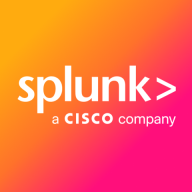![LogRhythm Axon [EOL] Logo](https://images.peerspot.com/image/upload/c_scale,dpr_3.0,f_auto,q_100,w_64/JhFXMVCYzfCrAS3M9VeNUMi6.png?_a=BACAGSDL)

Splunk Enterprise Security and LogRhythm Axon [EOL] compete in cybersecurity analytics. Splunk Enterprise Security seems to have the upper hand owing to comprehensive security features and positive feedback on pricing and support.
Features: Splunk Enterprise Security is known for advanced threat detection, powerful data analytics, and comprehensive security features. LogRhythm Axon [EOL] is recognized for incident response capabilities, compliance management, and seamless integration features.
Ease of Deployment and Customer Service: Splunk Enterprise Security provides flexible deployment options and reliable support services. LogRhythm Axon [EOL] offers comprehensive customer service but may require complex deployment, which can affect user experience.
Pricing and ROI: Splunk Enterprise Security requires a high initial setup cost, but many users acknowledge significant ROI due to its expansive capabilities. LogRhythm Axon [EOL] involves a considerable investment as well, with ROI seen as satisfactory given the specialized features offered.

| Company Size | Count |
|---|---|
| Small Business | 109 |
| Midsize Enterprise | 50 |
| Large Enterprise | 263 |
LogRhythm Axon [EOL] provided a comprehensive solution for IT security, enabling organizations to centralize log data collection and enhance threat detection capabilities. It streamlined security operations with advanced analytics and automated responses.
Designed for effective threat management, LogRhythm Axon [EOL] integrated seamlessly into security environments, offering robust analytics and incident response features. It allowed organizations to automate processes and improve security posture with real-time monitoring and alerts. Its architecture provided flexible threat intelligence and unified threat visibility across all networks.
What are the key features of LogRhythm Axon [EOL]?In financial industries, LogRhythm Axon [EOL] assisted in maintaining regulatory compliance through comprehensive logging and reporting capabilities. Healthcare organizations found it valuable for protecting sensitive patient data with its robust threat detection features. Its deployment across these sectors showcased adaptability across security infrastructures.
Splunk Enterprise Security delivers powerful log management, rapid searches, and intuitive dashboards, enhancing real-time analytics and security measures. Its advanced machine learning and wide system compatibility streamline threat detection and incident response across diverse IT environments.
Splunk Enterprise Security stands out in security operations with robust features like comprehensive threat intelligence and seamless data integration. Its real-time analytics and customizable queries enable proactive threat analysis and efficient incident response. Integration with multiple third-party feeds allows detailed threat correlation and streamlined data visualization. Users find the intuitive UI and broad compatibility support efficient threat detection while reducing false positives. Despite its strengths, areas such as visualization capabilities and integration processes with cloud environments need enhancement. Users face a high learning curve, and improvements in automation, AI, documentation, and training are desired to maximize its potential.
What Are the Key Features of Splunk Enterprise Security?In specific industries like finance and healthcare, Splunk Enterprise Security is instrumental for log aggregation, SIEM functionalities, and compliance monitoring. Companies leverage its capabilities for proactive threat analysis and response, ensuring comprehensive security monitoring and integration with various tools for heightened operational intelligence.
We monitor all Log Management reviews to prevent fraudulent reviews and keep review quality high. We do not post reviews by company employees or direct competitors. We validate each review for authenticity via cross-reference with LinkedIn, and personal follow-up with the reviewer when necessary.